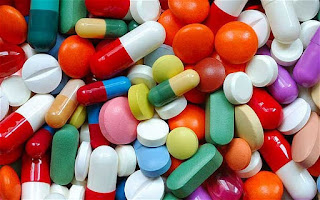Cefuroxime
Trade name:
Zinacef
Class: Antibiotic "cephalosporines" (second generation)
Pregnancy: (Category B)
Action: Bind to bacterial cell wall membrane,
causing cell death.
Uses:
Pharyngitis, tonsillitis , Otitis media ,Lower respiratory tract
infections, UTIs Dermatologic infections, Treatment of early Lyme disease
,Lower respiratory tract
infections, influenza, Septicemia, Meningitis Bone and joint infections,
Perioperative prophylaxis .
Dose : by mouth (as cefuroxime axetil), 250 mg
twice daily in most infections
including
mild to moderate lower respiratory-tract infections (e.g. bronchitis); doubled for more severe lower respiratory-tract infections or if
pneumonia suspected Urinary-tract infection,
125 mg twice daily, doubled in pyelonephritis
Gonorrhea, 1 g as a single dose
Child
over 3 months, 125 mg twice daily, if necessary doubled in child over 2 years with otitis media
Lyme disease, adult and
child over 12 years, 500 mg twice daily for 20 days By intramuscular injection or intravenous
injection or infusion, 750 mg every 6–8 hours; 1.5 g every 6–8 hours in severe
infections; single doses over 750 mg intravenous route only
Child usual dose 60 mg/kg
daily (range 30–100 mg/kg daily) in 3–4 divided doses (2–
3 divided doses in neonates)
Gonorrhea, 1.5 g as a single dose
by intramuscular injection (divided between 2 sites)
Surgical prophylaxis, 1.5 g by intravenous injection at induction;
up to 3 further doses of
750 mg may be given by intramuscular or intravenous injection every 8 hours for high-risk procedures
Meningitis, 3 g intravenously every 8 hours; Child
200–240 mg/kg daily (in 3–4
divided doses) reduced to 100 mg/kg daily after 3 days or on clinical
improvement; Neonate 100 mg/kg daily reduced to
50 mg/kg daily Contraindications:
Allergy to cephalosporin or
penicillins, renal failure, lactation, pregnancy Side effects:
• CNS: Headache, dizziness, lethargy, paresthesias
• GI: Nausea, vomiting, diarrhea,
anorexia, abdominal pain, flatulence, pseudo membranous colitis, liver toxicity
• Hematologic: Bone marrow
depression: decreased WBC, decreased platelets, decreased Hct.
• GU: Nephrotoxicity
• Hypersensitivity: Ranging from
rash to fever to anaphylaxis, serum sickness reaction.
Nursing
considerations:
• Culture infection, arrange for sensitivity tests before and
during therapy if expected response is not seen.
• Give oral drug with food to decrease GI upset and enhance
absorption.
• Give oral drug to children who can swallow tablets; crushing the
drug results in a bitter, unpleasant taste.
• Have vitamin K available in case hypoprothrombinemia occurs.
• Discontinue if hypersensitivity reaction occurs.




